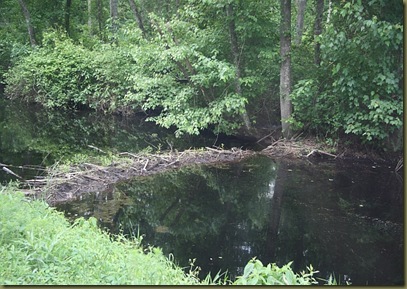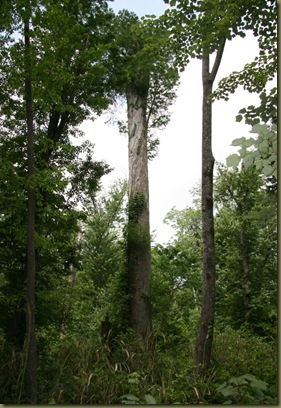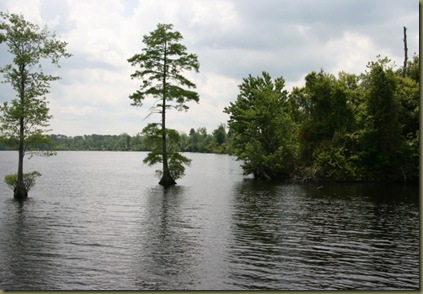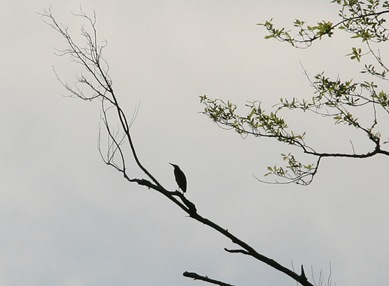Back in early May, my family and I attended the Great Dismal Swamp Birding Festival. As discussed in an earlier post, our first stage of the event was the bird banding demonstration. Our second stage of the event was a narrated bus tour throughout the refuge. It may not sound to exiting, but really it wasn't that bad. Living near the refuge all my life you would think that I would know a lot about it. After the tour, I realized that I didn't know much about this wonderful refuge at all.
The Great Dismal Swamp National Wildlife Refuge, established by congress in 1974, consist of over 111,000 acres of forested wetlands. The refuge was established to protect and restore the biologically important Great Dismal Swamp ecosystem. One of its missions is to provide protected habitat for migratory birds and other wildlife.
There is also a lot of American history involving the Great dismal Swamp. George Washington visited the swamp in the mid 1700s and formed the Dismal Swamp Land Company, which proceeded to drain and harvest timber from part of the area. A five-mile ditch on the west side of the current refuge there still bears his name, "The Washington Ditch". Before and during the American Civil War, the Great Dismal Swamp was a hideout for runaway slaves from the surrounding area. Some people believe there were at least a thousand slaves living in the swamp at one point.
Our tour consisted of various stops and short hikes along the way. One of the stops was to show the variety of tree life found throughout the swamp, including this large cypress tree. It supposedly is one of the oldest trees in the swamp estimated at 400 years old. As you can see, its missing its top half. It was speculated that lightning was the culprit.
Here is a beaver dam we cam across along the way. Beavers are abundant here. 
In the center of the wetland exist Lake Drummond. Its one of only two natural lakes found here in Virginia. At 3,100 acres, it is the largest. It is open to fishermen and canoers during certain seasons.
Perched up high was a green heron (I believe...).
Go to the link below for a list of birds that were spotted during the festival weekend - its quite an impressive list:
http://www.fws.gov/northeast/greatdismalswamp/pdf%20files/Festival%20List%20of%20birds%20seen08.pdf
Stay tuned for our next stop.
...to be continued...



No comments:
Post a Comment